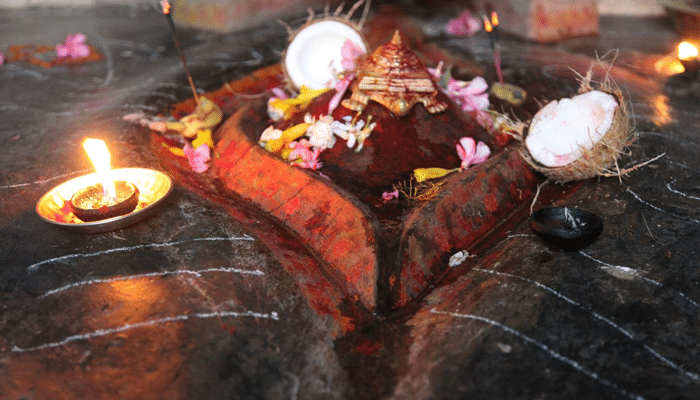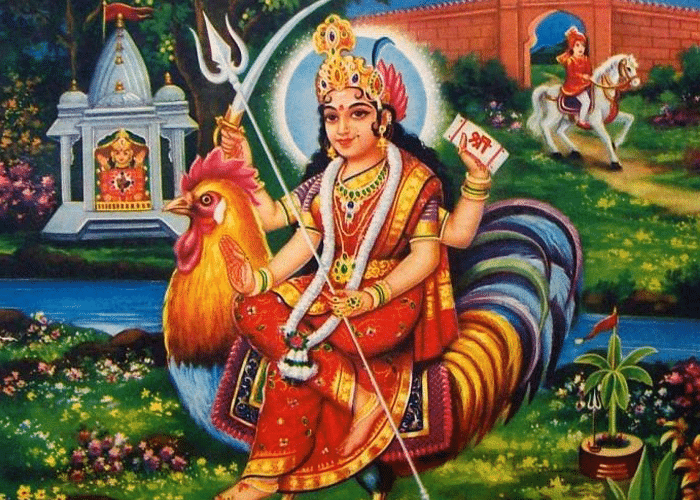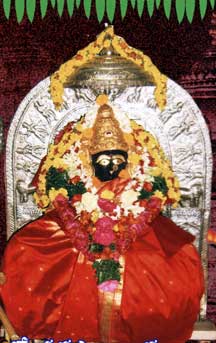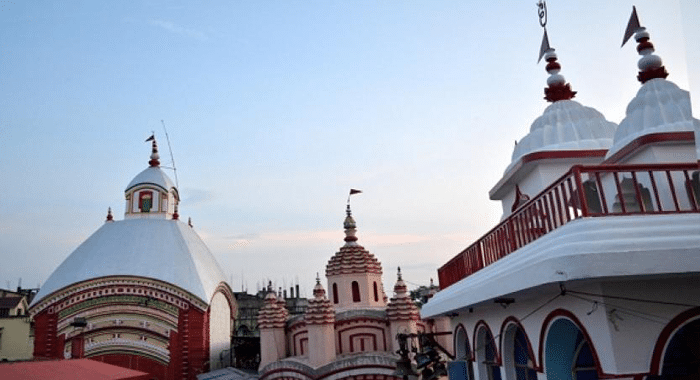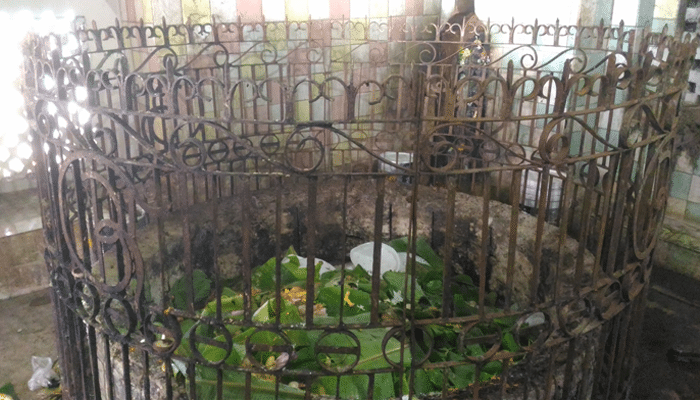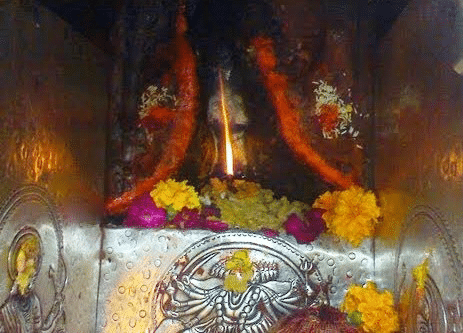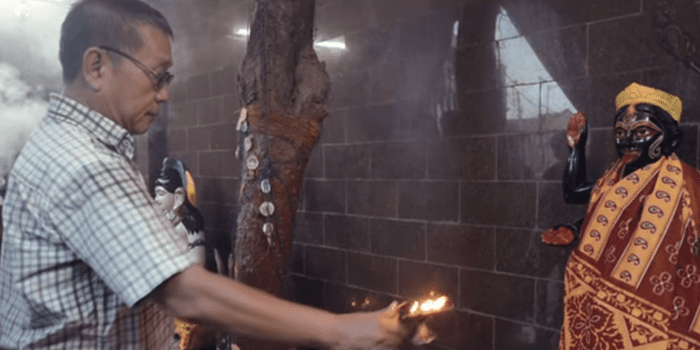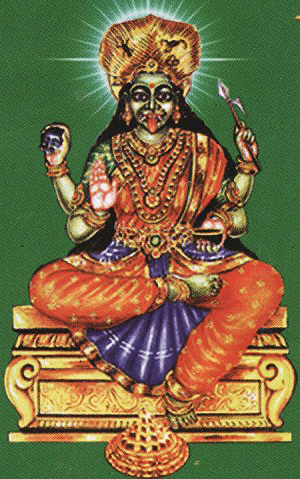She has landed on earth and we are all excited to pray to her wonderful earthen replicas! But would you like to know something even more interesting about her or perhaps visit her after sighting her in this post?
On this holy Navratri and Dushera season, we have enlisted some of the most mystical Goddesses of India. Let’s have a look on them!
Kamakhya Devi Temple
According to Devi Purana, Sati’s Mahamudra(female reproductive organ) fell in a cave which is worshipped here in the form of a stone. It is believed that from mid-June the deity Kamakhya starts menstruating which continues for three long days; during this period no homage is offered to the deity. The temple is situated on the Nilachal Hill in the western part of Guwahati city in Assam.
The temple is situated on the Nilachal Hill in the western part of Guwahati city in Assam.
Bahucharaji Mataji Temple
She was a daughter of a Charan by the name of Bapal dan Detha. She and her sisters were on a journey with a caravan when a marauder named Bapiya attacked their caravan. It was common practice among charan men and women, if overpowered by their enemies, not to surrender but to kill themselves. Shedding the blood of charan was considered a heinous sin. When Bapiya attacked the caravan, Bahuchara and her sisters announced tragu (self-immolation) and cut their breasts. Legend tells that Bapiya was cursed and became impotent. The curse was lifted only when he worshiped Bahuchara Mata by dressing and acting like a woman. Today Bahuchara Mata is considered patroness of the hijra community in India and worshipped by them and many other communities in Gujarat.
The temple of Bahuchara is located in Bahucharaji town in Mehsana district of Gujarat, India.
Manikyamba Devi Temple
It is believed that the deity was initially worshipped by the Bamachari sect of Hinduism and that is why the eyes of the idol are slightly tilted towards left. According to the Devi Purana, the left cheek of Sati fell here. Another legend states about the association of the deity with vesyas(prostitutes) and that is why she is also known as the Kuldevi of sex workers of that region. The temple is situated in Draksharamam, Andhra.
The temple is situated in Draksharamam, Andhra.
Tarapith Temple
The face of the deity in this temple is made of silver and unlike the other forms of Maa Kali, she has got two hands. She is wearing a garland of snake, and Shiva is found sucking her breast in the form a kid. A hub of tantric activities, offerings, and all supernatural deeds, a smasana(crematorium) is located next to this temple.
264 km from Kolkata, Tarapith is situated on the banks of the north-flowing Dwarka River, in Birbhum, in West Bengal.
Maa Biraja Temple
Every day hundreds and thousands of people flock into the temple to pray to the Goddess and pay homage to the dead ones. It is the second place after Gaya where souls are liberated for eternity through ‘Shradha’. The mystical thing about the temple is that there is a well which is revered as the Navi of the Goddess where all the ‘Pind’ are poured in. Every morning the well becomes empty. No one knows where all that leaves and fruits go!
The temple site is situated in Jajpur, Odisha which is also known as Navi Gaya as the Navel of Sati fell here.
Maa Jwala Ji Temple
Instead of idols, flames are worshipped as the manifestation of the deity. All these flames are seen to be erupting from the sides of a rock and they keep on burning constantly without any fuel. It is said that the tongue of Sati fell on this part.
This temple is located in Shaktinagar which is 119 km from Robertsganj in Sonbhadra district, Uttar Pradesh.
Karni Mata Temple
Karni Mata is known as the famous goddess of the warriors. It is also known as the Temple of Rats. There are approximately 25,000 black rats that live and are revered in the temple. These holy rats are called ‘kabbas‘ who represent warriors from ancient Rajasthan.
This temple is situated at Deshnoke, 30 km from Bikaner, in Rajasthan, India.
Chinese Kali Temple
There is nothing different about the Kali idol. But one look at the `bhog’ – noodles, chop suey, rice-and-vegetables dishes – and you realize this isn’t just any Kali temple. In the heart of Kolkata’s Tangra area – India’s own Chinatown, stands this unique symbol of cross-cultural assimilation.
Jogulamba Temple
The main attraction of this temple situated in Alampur, Telangana, is the idol of Jogulamba who has long hair with lizards, scorpions, bats and human skulls hanging from them. The deity is worshipped by the devotees suffering from Vastu Dosha.
Mahalaxmi Devi Temple
The main attraction of the temple is a small open window on the western wall through which rays of the setting sun fall directly on the deity’s face on the 21st of each March and September. There are six fixed days in each year when sunrays enlighten different parts of the idol of the deity. On those days Kiranotsava Festival is organized.
The temple is located in Kolhapur, Maharashtra.
Bhramaramba Devi Temple
In this temple, Goddess Durga is worshipped as Bhramari. Bhramari means the mother of bees and coincidentally inside a granite wall at the back of the temple, a huge number of bees are found buzzing. The temple marks the site where Maa Sati’s neck fell after it was severed from her corpse by Lord Vishnu. Bhramaramba Devi, ‘Goddess of Bees’, idolized as Goddess Lakshmi and the slayer of demon Arunasura, had freed people from the clutches and terror of the demon.
This temple is situated in Kurnool, Andhra Pradesh.
How many of the above temples have you visited already?


